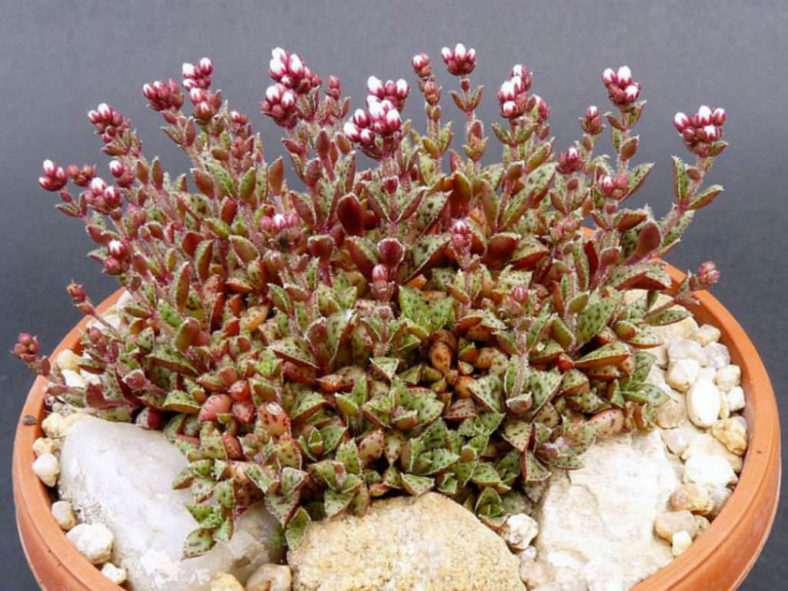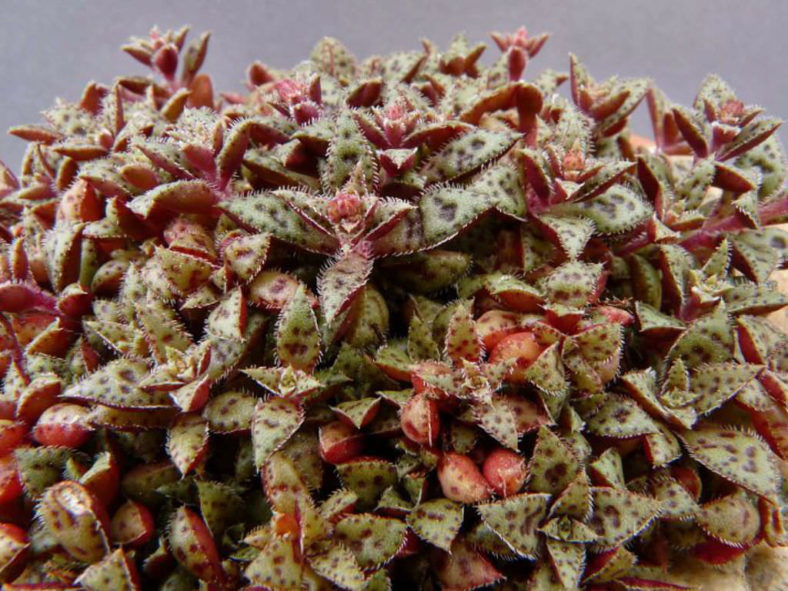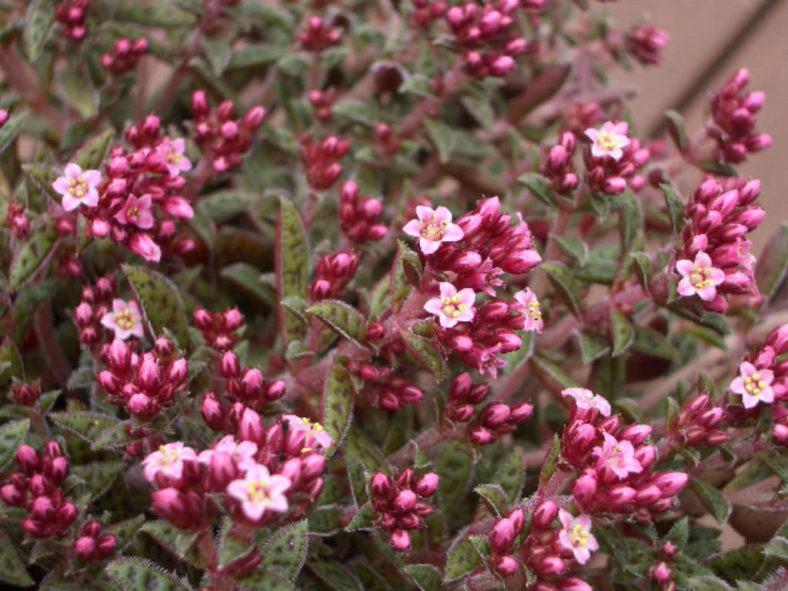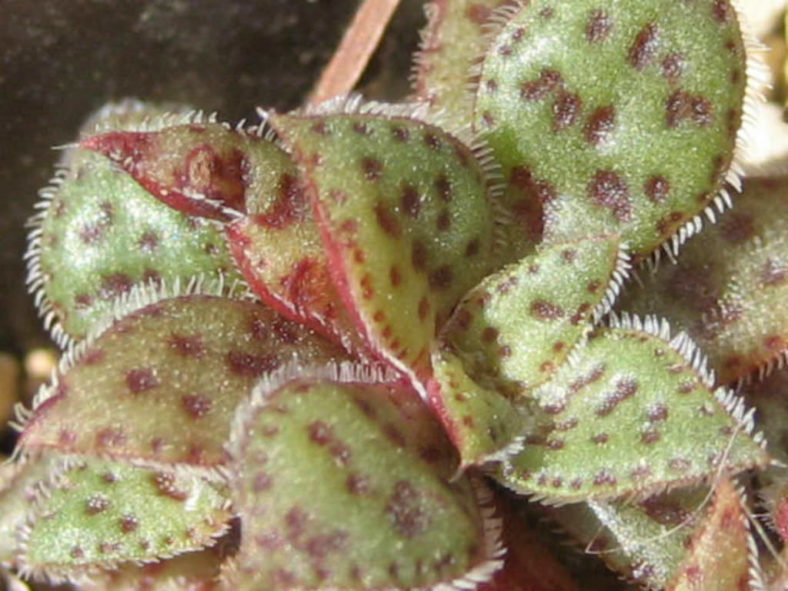Scientific Name
Crassula exilis subsp. cooperi (Regel) Tölken
Synonym(s)
Crassula cooperi, Crassula bolusii, Sedum regelii
Scientific Classification
Family: Crassulaceae
Subfamily: Crassuloideae
Genus: Crassula
Etymology
The specific epithet "cooperi" (pronounced "koo-PER-ee") honors Thomas Cooper (1815-1913), an English botanist and explorer who collected plants in South Africa from 1859 to 1862. He was the father-in-law of Nicholas Edward Brown.
Origin
Crassula exilis subsp. cooperi is native to South Africa (Cape Province).
Description
Crassula exilis subsp. cooperi is a branched succulent that forms dense cushions, often covering large soil areas under rocks in its natural habitat. The stems are covered with fine, spreading hairs. The leaves are grey-green with dark, dimpled spots on the upper surface. They are flattened, measuring up to 1.8 inches (4.5 cm) in length and 4 inches (10 cm) in width.
The flowers are small, cup-shaped, white to more or less pink, and appear in fall through to mid-winter.

Hybrids of Crassula exilis subsp. cooperi
How to Grow and Care for Crassula exilis subsp. cooperi
Hardiness: USDA hardiness zones 9b to 11b: from 25 °F (−3.9 °C) to 50 °F (+10 °C).
Crassulas are easy to grow but susceptible to mealybugs and fungal diseases. Overwatering is sure to be fatal, as with all succulents, so err on the side of being too dry rather than too wet. Never let your plant sit in water. If you water from beneath by allowing the plant to sit in a saucer, pour off any excess water after a few minutes.
These succulents are generally started by division, offsets, or leaf cuttings. Crassulas can be easily propagated from a single leaf. Sprout leaves by placing them into a potting mix for succulents, then covering the dish until they sprout.
Repot as needed, preferably during the warm season. To repot your Crassula, ensure the soil is dry before repotting, then gently remove the pot. Knock away the old soil from the roots, removing any rotted or dead roots. Treat any cuts with a fungicide. Place the plant in its new pot and backfill it with potting soil, spreading the roots as you repot. Leave the plant dry for a week or so, then water lightly to reduce the risk of root rot.
Learn more at How to Grow and Care for Crassula.
Links
- Back to genus Crassula
- Succupedia: Browse succulents by Scientific Name, Common Name, Genus, Family, USDA Hardiness Zone, Origin, or cacti by Genus
Photo Gallery


